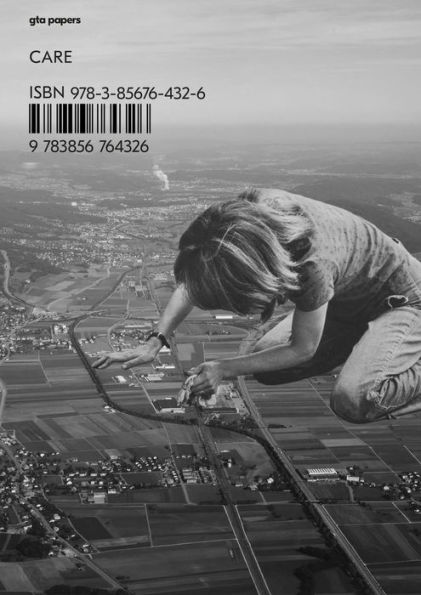Home
Care
Barnes and Noble
Loading Inventory...
Care in Bloomington, MN
Current price: $25.00


Care in Bloomington, MN
Current price: $25.00
Loading Inventory...
Size: OS
An analysis of how systems of care have changed and their impact on architecture.
Care work is at once omnipresent and invisible. It encompasses all forms of socially necessaryor reproductivelabor: raising children, cooking, cleaning, shopping, looking after the elderly and the ill, and many other tasks. It is what allows for, and sustains, productive labor. Although economic production depends on the work of social reproduction, care work is usually unpaid and pushed out of sight. It is indisputable that care work falls disproportionately upon women, and unevenly along lines of race and class. In this issue of gta papers, the authors look at how this unpaid care labor has affected architectural labor and approaches. As this book shows, demographic changes, environmental crises, growing mobility, and the reconfiguration of traditional institutions of carefrom the nuclear family to welfare state provisionshave made the inequity of care a key problem in architectural debate.
Care work is at once omnipresent and invisible. It encompasses all forms of socially necessaryor reproductivelabor: raising children, cooking, cleaning, shopping, looking after the elderly and the ill, and many other tasks. It is what allows for, and sustains, productive labor. Although economic production depends on the work of social reproduction, care work is usually unpaid and pushed out of sight. It is indisputable that care work falls disproportionately upon women, and unevenly along lines of race and class. In this issue of gta papers, the authors look at how this unpaid care labor has affected architectural labor and approaches. As this book shows, demographic changes, environmental crises, growing mobility, and the reconfiguration of traditional institutions of carefrom the nuclear family to welfare state provisionshave made the inequity of care a key problem in architectural debate.
An analysis of how systems of care have changed and their impact on architecture.
Care work is at once omnipresent and invisible. It encompasses all forms of socially necessaryor reproductivelabor: raising children, cooking, cleaning, shopping, looking after the elderly and the ill, and many other tasks. It is what allows for, and sustains, productive labor. Although economic production depends on the work of social reproduction, care work is usually unpaid and pushed out of sight. It is indisputable that care work falls disproportionately upon women, and unevenly along lines of race and class. In this issue of gta papers, the authors look at how this unpaid care labor has affected architectural labor and approaches. As this book shows, demographic changes, environmental crises, growing mobility, and the reconfiguration of traditional institutions of carefrom the nuclear family to welfare state provisionshave made the inequity of care a key problem in architectural debate.
Care work is at once omnipresent and invisible. It encompasses all forms of socially necessaryor reproductivelabor: raising children, cooking, cleaning, shopping, looking after the elderly and the ill, and many other tasks. It is what allows for, and sustains, productive labor. Although economic production depends on the work of social reproduction, care work is usually unpaid and pushed out of sight. It is indisputable that care work falls disproportionately upon women, and unevenly along lines of race and class. In this issue of gta papers, the authors look at how this unpaid care labor has affected architectural labor and approaches. As this book shows, demographic changes, environmental crises, growing mobility, and the reconfiguration of traditional institutions of carefrom the nuclear family to welfare state provisionshave made the inequity of care a key problem in architectural debate.
![C'mon [Barnes & Noble Exclusive]](https://prodimage.images-bn.com/pimages/0751937362326_p0_v1_s600x595.jpg)
![Wellspring [Barnes & Noble Exclusive]](https://prodimage.images-bn.com/pimages/0884501047746_p0_v1_s600x595.jpg)



![Wonderland [Barnes & Noble Exclusive]](https://prodimage.images-bn.com/pimages/0602557155105_p0_v4_s600x595.jpg)
![Shadowland [Barnes & Noble Exclusive]](https://prodimage.images-bn.com/pimages/0093624920434_p0_v2_s600x595.jpg)
![Parallel [Barnes & Noble Exclusive]](https://prodimage.images-bn.com/pimages/4050538947892_p0_v1_s600x595.jpg)
![Zaz [Barnes & Noble Exclusive]](https://prodimage.images-bn.com/pimages/0886977447327_p0_v1_s600x595.jpg)








